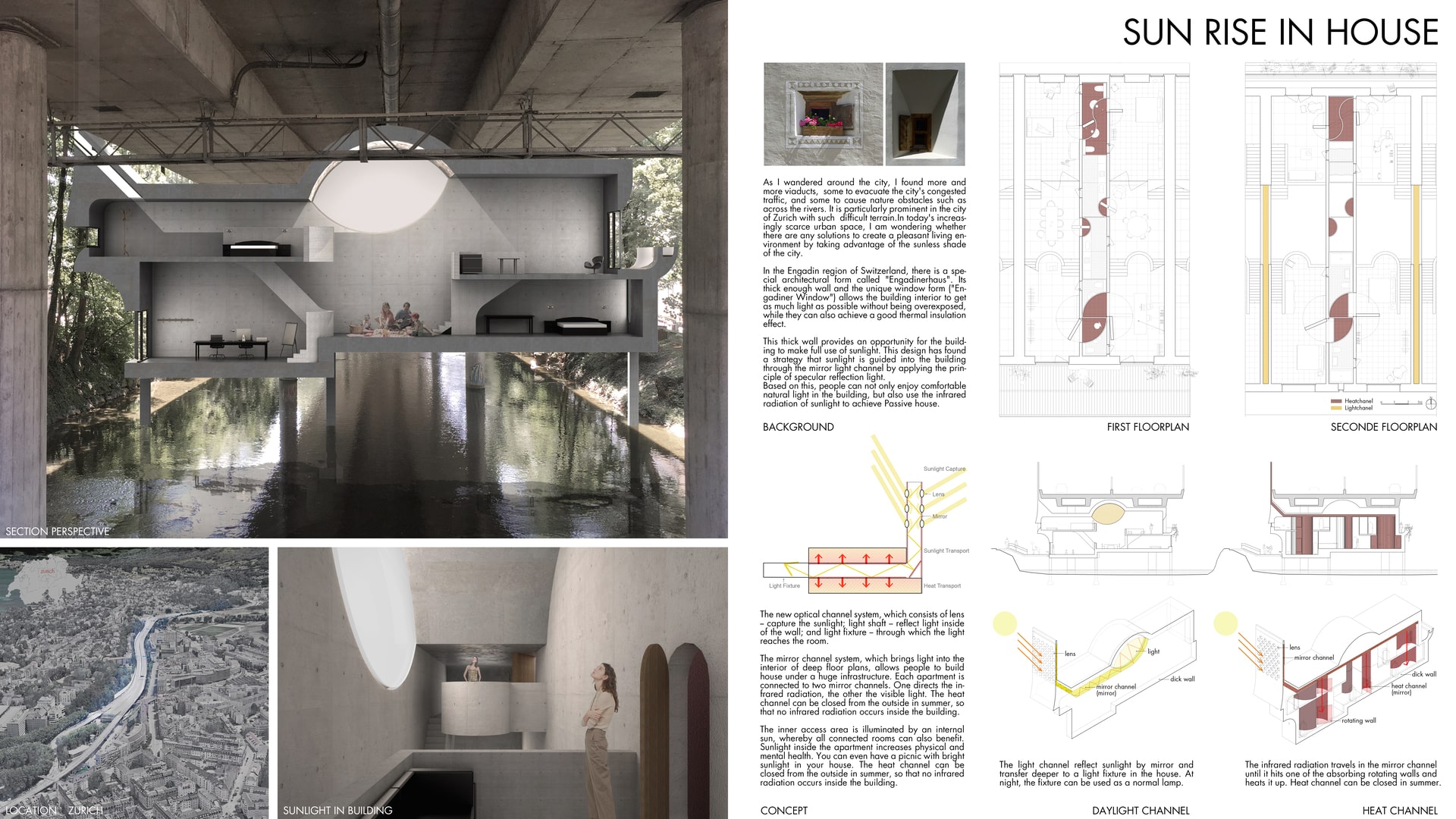Project Description
As I wandered around the city, I found more and more viaducts, some to evacuate the city's congested traffic, and some to cause nature obstacles such as across the rivers. It is particularly prominent in the city of Zurich with such difficult terrain. In today's increasingly scarce urban space, I am wondering whether there are any solutions to create a pleasant living environment by taking advantage of the sunless shade of the city. In the Engadin region of Switzerland, there is a special architectural typ called "Engadinerhaus". Its thick enough wall and the unique window form ("Engadiner Window") allows the building interior to get as much light as possible without being overexposed while they can also achieve a good thermal insulation effect. By using the principle of “Engadinghaus” to design house with thick walls, which provides an opportunity for the building to make full use of sunlight. This design has found a strategy that sunlight is guided into the building through the mirror light channel by applying the principle of specular reflection light. The new optical channel system, which consists of lens -- capture the sunlight; light shaft -- reflect light inside of the wall; and light fixture -- through which the light reaches the room. The mirror channel system, which brings light into the interior of deep floor plans, allows people to build house under a huge infrastructure. Each apartment is connected to two mirror channels. One directs the infrared radiation, the other the visible light. The heat channel can be closed from the outside in summer, so that no infrared radiation occurs inside the building. Based on this, people can not only enjoy comfortable natural daylight in the building, but also use the infrared radiation of sunlight to achieve passive house.
